- Joined
- Jul 1, 2014
- Messages
- 3,723 (0.95/day)
zAnother day, another audio product quick look. This time, the folks over at Philips get some love with the US launch of their PH805 active noise cancelling (ANC) headphones, the news of which we covered before. The company has gone through big changes over the years, and one of the effects has been regional business units operating independently enough to have separate launch windows for products. Take this very product, for example, which had been out for purchase for a couple of months already last year in Europe and parts of Asia, and Philips USA only just got it in 2020. Somehow, we had no coverage on this to date, but that changes now.
The PH805, also referred to as the PH805BK or TAPH805BK, follows a trend of product names that make little sense, but all you need to know is that this is from the same company and team that brought out the excellent Fidelio series that offered great value for money to those wanting an open-back, over-ear headphones with a neutral signature without any real shortcomings across the frequency range. They are readying the new Fidelio x3 for launch soon, but the PH805 aims to interest a different segment entirely. In particular, the frequent traveler or mobile user that wants a lightweight set of cans with ANC and wireless connectivity. It ships in a retail packaging that is well designed, with the company and product name on the front along with a large render and marketing features throughout, with a clear note on Google Assistant compatibility. Sorry, iOS users! Read past the break for more on the Philips PH805BK, including an unboxing, user experience, and what it costs to get you one of these in the USA.
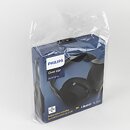


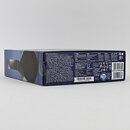
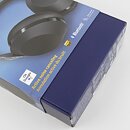
Philips employs a two-piece packaging for the PH805, with an outer sleeve over a blue cardboard inner box that also has a handle for retail stocking. Opening the box, we see a foam lining on the top that adds protection during transit. The headphones themselves come in a compact carry case, with paperwork found inside a shaped piece of cardboard on the left for snug packaging. This includes notes on safety and regulatory certification, as well as a handy quick start guide that unfolds to let people know of the onboard controls, including powering on and pairing via Bluetooth, as well as volume and media control in addition to the ANC modes themselves.
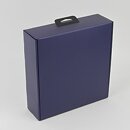

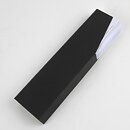
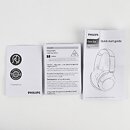
The headphones themselves are folded for a compact travel advantage, and the case they come in is sturdy and lightweight enough to take with you on a flight as well. There is even a fabric handle to use alongside a carabiner on a travel bag, and the included accessories add to the whole travel/flight experience use case. These are found inside a separate compartment at the top, and Philips includes an airline adapter for those aircrafts which rely on a two-prong design instead of a combination 3.5 mm line-in. We also get a 2.5 mm to 3.5 mm cable accordingly, with gold-plated connectors for oxidation resistance. Rounding off the accessories is a short USB Type-A to micro-USB cable, which points towards the use of micro-USB on the headphones themselves for charging the internal battery or for wired connectivity.
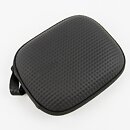




The PH805 is relatively lightweight at ~235 grams, primarily because of the plastic frame construction with foam and leatherette lining. It does not feel premium in the hands subjectively, but it does exactly what it advertises in offering a portable solution that does not tire you even with long hours of continuous use. The critical parts are metal, however, including the internal sizing stainless steel band and the yokes, which is all the more necessary in this foldable pair of headphones.







The earcups have a leatherette exterior, which gets fancy names these days including protein leather or vegan leather, but is an increasingly common material used for closed-back headphones in allowing a balance of cost, comfort, and fit for noise isolation with the foam inside. For headphones that advertise ANC, this is an understandable choice. But the presence of micro-fractures on the surface even out of the box leaves for a less-than-desirable experience, especially combined with the rest of the construction here. There are plastic wraps to peel off on the earcup sides, and we indeed see a micro-USB port for charging and wired connectivity, in addition to the 3.5 mm jack and a 3-way power button that goes in, up, or down. Most of the controls are given to the right earcup, perhaps in a move to cater to the right-handed majority of users around the world. There is also a set of status indicator LEDs, which shine to reveal whether ANC is on, whether the headphones are paired already, charging or charged fully, and so on.
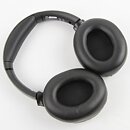
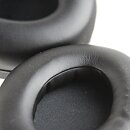
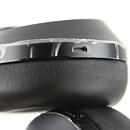


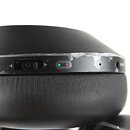
Once powered on and in pairing mode via Bluetooth 5.0, if you have an Android phone with Google Assistant the headphones show up automatically as a Google Assistant-compatible device, and prompts you to pair it to the phone, as well as tie it to the email address associated with your Google account. This is more of a native support already than merely adding them as Bluetooth headphones, but again your experience will likely be different on iOS. Once paired, you can set up Google Assistant to work with the headphones, including giving it access to control over notifications and pulling it up as a prompt. There are also settings available in Android Open Source Project for this, and you also get more info on the headphones themselves here. Indeed, this level of support is what I typically expect with, say, Google Pixel buds or other first-party manufactured headphones, and Philips makes a strong case here for Android users in a move that is increasingly rare today.







The headphones themselves are quite similar in both size, shape, material design, and specs to the Sony WH-1000MX2, which no doubt helped lay the base for the current leader in the ANC wireless headphones market in the form of the WH-1000MX3. Indeed, be it the 40 mm neodymium magnet drivers paired with PET diaphragms and 16 Ω impedance, things look like the WH-1000MX2 has been inspiring to more than just the WH-1000MX3. The touch controls here are also quite similar, and yet this is not a complaint. They are executed well, with the right earcup surface allowing volume and media playback control, as well as pulling up Google Assistant. Oh, the speakers inside also work for auditory notifications on the status of the device, as well as to communicate with Google Assistant itself. We do not get LDAC support here, however, which would have been nice to see if there ever was something to take from Sony headphones, and there's only SBC onboard over Bluetooth. Also, the claimed Hi-Res audio feature is really only in wired mode when paired to a source compatible with a high bitrate transmission.
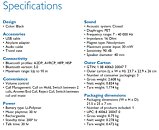
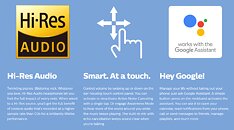
The vast majority of users will no doubt use the Philips PH805 in Bluetooth mode, and it works quite well purely as a pair of headphones. Keep in mind that this is foremost a closed-back set of cans, so don't expect a wide soundstage if you are used to open-back headphones. Philips appears to have tuned the PH805 towards the lower end of the frequency curve more, with fairly accurate bass signatures that lead towards equally pronounced highs. But there are definitely occasions where vocals got muddled for me in the mids, with instrumental music especially being a weak point compared to the rest. In wired mode, the PH805 uses a 2.5 to 3.5 mm cable, so you will absolutely need to use the provided cable, and it works better here.
The advantage of wireless connectivity no doubt is also the ability to freely use this in a variety of environments, and Bluetooth 5.0 allows for low energy use with a rated 30 hour battery life and ~200 hours of standby. This no doubt is with ANC off (25 hours rated here), and I lost 40% battery after ~14 hours of mixed playback, which is excellent. Helping also here is support for two separate forms of quick charging with the PH805 rated for 1.5 hours for a full charge but, more importantly, Rapid Charge (5 min for 2 hours playback) or Quick Charge (15 min for 6 hours). The only thing I would have liked better was the use of Type-C connectivity here, since I do not fancy wanting to take along another cable, even if it does fit in nicely in the carry case.
Last, and certainly not least, is the noise cancelling feature aboard here. There are three modes of ANC on the PH805, including on, off, and awareness (environment) mode. Unfortunately, this is where the comparisons to the Sony WH-1000MX2 fall harder than a poorly balanced Jenga stack. Most of the noise cancellation comes purely from the closed back and foam earcup isolation, with ANC on doing very little to add on top. Philips does not talk about how many microphones there are used on each earcup for ANC, and it is a good thing then that the passive noise cancellation is fairly good to begin with. It does cut down on white noise more than structured noise, so using ANC here on a flight will actually work out better than using it outdoors walking around. Awareness mode does a really good job in boosting the exterior sounds when needed, say when waiting at a departure gate for a flight, but of course this is where the listening experience is the worst of the lot too.
The Philips PH805 was first up for sale in the US for $199.99 earlier this year, but is already down to a street price of ~$156 from retailers including Amazon.com. This is a lot more competitive now, not only to the EU pricing around 175 Euros, but also when compared to the competition that offers a similar feature set and experience for the same or higher now. However relevant the Philips brand recognition is these days, the PH805 at the going price is worth considering even as a pair of comfortable, portable, wireless Bluetooth headphones. The ANC and Google Assistant support are just extras at this point, with the latter simply being better implemented than the former.
View at TechPowerUp Main Site
The PH805, also referred to as the PH805BK or TAPH805BK, follows a trend of product names that make little sense, but all you need to know is that this is from the same company and team that brought out the excellent Fidelio series that offered great value for money to those wanting an open-back, over-ear headphones with a neutral signature without any real shortcomings across the frequency range. They are readying the new Fidelio x3 for launch soon, but the PH805 aims to interest a different segment entirely. In particular, the frequent traveler or mobile user that wants a lightweight set of cans with ANC and wireless connectivity. It ships in a retail packaging that is well designed, with the company and product name on the front along with a large render and marketing features throughout, with a clear note on Google Assistant compatibility. Sorry, iOS users! Read past the break for more on the Philips PH805BK, including an unboxing, user experience, and what it costs to get you one of these in the USA.





Philips employs a two-piece packaging for the PH805, with an outer sleeve over a blue cardboard inner box that also has a handle for retail stocking. Opening the box, we see a foam lining on the top that adds protection during transit. The headphones themselves come in a compact carry case, with paperwork found inside a shaped piece of cardboard on the left for snug packaging. This includes notes on safety and regulatory certification, as well as a handy quick start guide that unfolds to let people know of the onboard controls, including powering on and pairing via Bluetooth, as well as volume and media control in addition to the ANC modes themselves.




The headphones themselves are folded for a compact travel advantage, and the case they come in is sturdy and lightweight enough to take with you on a flight as well. There is even a fabric handle to use alongside a carabiner on a travel bag, and the included accessories add to the whole travel/flight experience use case. These are found inside a separate compartment at the top, and Philips includes an airline adapter for those aircrafts which rely on a two-prong design instead of a combination 3.5 mm line-in. We also get a 2.5 mm to 3.5 mm cable accordingly, with gold-plated connectors for oxidation resistance. Rounding off the accessories is a short USB Type-A to micro-USB cable, which points towards the use of micro-USB on the headphones themselves for charging the internal battery or for wired connectivity.





The PH805 is relatively lightweight at ~235 grams, primarily because of the plastic frame construction with foam and leatherette lining. It does not feel premium in the hands subjectively, but it does exactly what it advertises in offering a portable solution that does not tire you even with long hours of continuous use. The critical parts are metal, however, including the internal sizing stainless steel band and the yokes, which is all the more necessary in this foldable pair of headphones.







The earcups have a leatherette exterior, which gets fancy names these days including protein leather or vegan leather, but is an increasingly common material used for closed-back headphones in allowing a balance of cost, comfort, and fit for noise isolation with the foam inside. For headphones that advertise ANC, this is an understandable choice. But the presence of micro-fractures on the surface even out of the box leaves for a less-than-desirable experience, especially combined with the rest of the construction here. There are plastic wraps to peel off on the earcup sides, and we indeed see a micro-USB port for charging and wired connectivity, in addition to the 3.5 mm jack and a 3-way power button that goes in, up, or down. Most of the controls are given to the right earcup, perhaps in a move to cater to the right-handed majority of users around the world. There is also a set of status indicator LEDs, which shine to reveal whether ANC is on, whether the headphones are paired already, charging or charged fully, and so on.






Once powered on and in pairing mode via Bluetooth 5.0, if you have an Android phone with Google Assistant the headphones show up automatically as a Google Assistant-compatible device, and prompts you to pair it to the phone, as well as tie it to the email address associated with your Google account. This is more of a native support already than merely adding them as Bluetooth headphones, but again your experience will likely be different on iOS. Once paired, you can set up Google Assistant to work with the headphones, including giving it access to control over notifications and pulling it up as a prompt. There are also settings available in Android Open Source Project for this, and you also get more info on the headphones themselves here. Indeed, this level of support is what I typically expect with, say, Google Pixel buds or other first-party manufactured headphones, and Philips makes a strong case here for Android users in a move that is increasingly rare today.







The headphones themselves are quite similar in both size, shape, material design, and specs to the Sony WH-1000MX2, which no doubt helped lay the base for the current leader in the ANC wireless headphones market in the form of the WH-1000MX3. Indeed, be it the 40 mm neodymium magnet drivers paired with PET diaphragms and 16 Ω impedance, things look like the WH-1000MX2 has been inspiring to more than just the WH-1000MX3. The touch controls here are also quite similar, and yet this is not a complaint. They are executed well, with the right earcup surface allowing volume and media playback control, as well as pulling up Google Assistant. Oh, the speakers inside also work for auditory notifications on the status of the device, as well as to communicate with Google Assistant itself. We do not get LDAC support here, however, which would have been nice to see if there ever was something to take from Sony headphones, and there's only SBC onboard over Bluetooth. Also, the claimed Hi-Res audio feature is really only in wired mode when paired to a source compatible with a high bitrate transmission.


The vast majority of users will no doubt use the Philips PH805 in Bluetooth mode, and it works quite well purely as a pair of headphones. Keep in mind that this is foremost a closed-back set of cans, so don't expect a wide soundstage if you are used to open-back headphones. Philips appears to have tuned the PH805 towards the lower end of the frequency curve more, with fairly accurate bass signatures that lead towards equally pronounced highs. But there are definitely occasions where vocals got muddled for me in the mids, with instrumental music especially being a weak point compared to the rest. In wired mode, the PH805 uses a 2.5 to 3.5 mm cable, so you will absolutely need to use the provided cable, and it works better here.
The advantage of wireless connectivity no doubt is also the ability to freely use this in a variety of environments, and Bluetooth 5.0 allows for low energy use with a rated 30 hour battery life and ~200 hours of standby. This no doubt is with ANC off (25 hours rated here), and I lost 40% battery after ~14 hours of mixed playback, which is excellent. Helping also here is support for two separate forms of quick charging with the PH805 rated for 1.5 hours for a full charge but, more importantly, Rapid Charge (5 min for 2 hours playback) or Quick Charge (15 min for 6 hours). The only thing I would have liked better was the use of Type-C connectivity here, since I do not fancy wanting to take along another cable, even if it does fit in nicely in the carry case.
Last, and certainly not least, is the noise cancelling feature aboard here. There are three modes of ANC on the PH805, including on, off, and awareness (environment) mode. Unfortunately, this is where the comparisons to the Sony WH-1000MX2 fall harder than a poorly balanced Jenga stack. Most of the noise cancellation comes purely from the closed back and foam earcup isolation, with ANC on doing very little to add on top. Philips does not talk about how many microphones there are used on each earcup for ANC, and it is a good thing then that the passive noise cancellation is fairly good to begin with. It does cut down on white noise more than structured noise, so using ANC here on a flight will actually work out better than using it outdoors walking around. Awareness mode does a really good job in boosting the exterior sounds when needed, say when waiting at a departure gate for a flight, but of course this is where the listening experience is the worst of the lot too.
The Philips PH805 was first up for sale in the US for $199.99 earlier this year, but is already down to a street price of ~$156 from retailers including Amazon.com. This is a lot more competitive now, not only to the EU pricing around 175 Euros, but also when compared to the competition that offers a similar feature set and experience for the same or higher now. However relevant the Philips brand recognition is these days, the PH805 at the going price is worth considering even as a pair of comfortable, portable, wireless Bluetooth headphones. The ANC and Google Assistant support are just extras at this point, with the latter simply being better implemented than the former.
View at TechPowerUp Main Site


